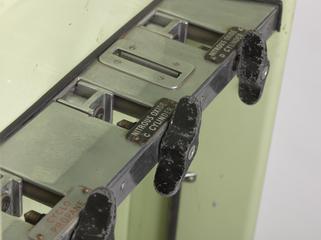'Amplon' bottle of cyclopropane gas
Metal "Amplon" bottle of cyclopropane gas, by E.R. Squibb and Sons, New York, 1940-1955
More
‘Amplon’ is a trade name for liquid cyclopropane gas. The gas was first synthesised in 1885 in the United States and was in use as an anaesthetic from 1930 onwards. After piercing the tops, the gas was connected to and inhaled through a face mask. Made by E R Squibb & Sons in New York, cyclopropane was used especially for chest surgery. The gas’s main drawback was that it was inflammable and so it was replaced by non-flammable gases in the late 1950s.








